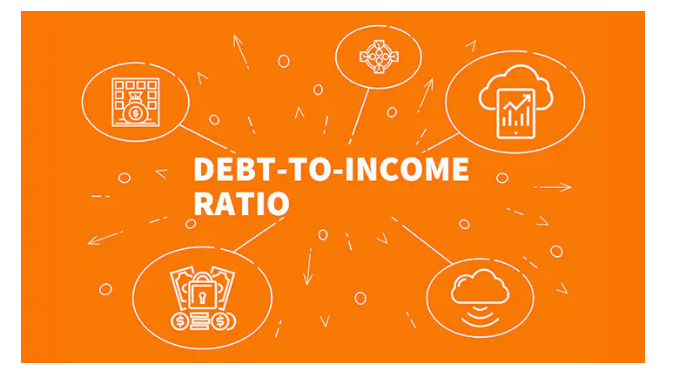The Role of Debt-to-Income Ratio in Personal and Business Finance

Financial institutions use the Debt-to-Income (DTI) ratio as a critical standard to examine the debt management capabilities of individuals and businesses. Credit assessments and financial planning use this ratio to evaluate the repayment capabilities of borrowed funds while reviewing the ability to pay future debts. Long-term economic stability depends heavily on keeping a healthy DTI ratio for individuals and businesses.
The DTI ratio enables individuals to make strategic financial selections because it provides essential feedback about their ability to borrow money and manage their budgets and investments. Lenders’ loan approval process depends heavily on this ratio because it is the definitive measure of financial credibility. The DTI ratio determines your chances for obtaining personal and business loans at every step of your funding application journey.
Understanding the Debt-to-Income Ratio
You obtain the DTI ratio result by dividing the sum of monthly debt payments by gross monthly income. The financial health assessment depends on this ratio, which lenders typically state as a percentage. Better health exists with lower percentages. Your DTI ratio becomes 33% when your monthly debts equal $2,000 and your gross monthly income reaches $6,000. The DTI ratio serves lenders as an indicator of how risky customers’ financial situations appear. A high DTI signals that someone or a business operates with excessive debt, making it hard to manage new debt payments. Higher DTI ratios indicate that income exceeds debt obligations, making it easier to pay debt payments.
Personal Finance Implications
The DTI ratio is a primary evaluation method for personal finance applications for credit cards, auto loans, and mortgages. Mortgage lenders need their borrowers to maintain below 36% DTI and limit house expense payments to 28% of the total. Dean Lee, Head of Marketing at Sealions, asserted, This standard measurement prevents financial overreach by borrowers. When a person has a high DTI, their borrowing ability decreases, leading to loan rejections and higher interest rates from lenders. Checking this ratio allows people to enforce financial self-control, making them decide wisely regarding debt addition and reduction.”
Business Finance Considerations
Businesses need the DTI ratio measurement to show lenders sufficient financial health when they seek loans or credit lines. The measurement helps lenders determine if a company has enough income to address existing debt and new borrowing needs. Christie Lindstrom, Chief Marketing Officer at iGrafx, says, “A business facing challenges in loan acquisition exists because of its high DTI ratio, which shows possible cash flow problems or indicates that funding through debt has become excessive. A growingly lower DTI ratio demonstrates companies’ responsible financial decisions, leading to better credit standing with investors and banks.”
Impact on Creditworthiness
An entity’s credit profile depends specifically on its DTI ratio. Lenders use credit scores and DTI ratios to evaluate each borrower’s credit standing. Jana Abelovská, Superintendent Pharmacist at Click Pharmacy, commented, “Financial institutions gauge creditworthiness via DTI ratio measurements; low DTI ratios present better credit potential than high ratios. A person who maintains a proper DTI ratio increases their opportunity to obtain loans and secured better financial rates from lenders. The improved access to working capital becomes a business advantage, enhanced trade credit terms, and increased investor confidence.”
Managing and Improving DTI Ratio
The improvement of your DTI ratio depends on two factors: raising income levels and decreasing debt amounts. “People who want to enhance their DTI must look for new jobs, seek reduced interest rates through refinancing, or perform cost-cutting measures. Budgeting systems and financial planning tools help organizations track budget development and balance ratios. Businesses’ DTI ratios may be managed through operational efficiency improvements, revenue stream growth, and existing debt restructuring. Strategic planning and regular financial audits reveal which debt reduction strategies will work best to maintain operational growth,” reported Brett Gelfand, Managing Partner at Cannabiz Credit Association
DTI Ratio in Economic Downturns
The factor that makes your DTI ratio most critical typically emerges during economic decline. “People and businesses face higher economic risks when their decreased revenue meets rising expenses, resulting in elevated debt-to-asset ratios. Having a low DTI ratio protects individuals from unforeseen economic challenges. Furthermore, it gives them better access to funding from support programs and allows them to make more informed financial decisions,” shared Ben Flynn, Marketing Manager at 88Vape.
Conclusion
A person needs to know their Debt-to-Income ratio to assess their financial situation, while businesses use it for similar purposes. The DTI ratio functions as a critical element in financial planning, serving as a basis for lenders to decide on credit approval and for institutions to determine creditworthiness. Managing and tracking the DTI ratio establishes better financial stability, which makes better credit options available and enables proper preparation for economic crises. The DTI ratio provides the core foundation for all financial choices during personal or business decision-making.
Read More From Techbullion

Source: The Role of Debt-to-Income Ratio in Personal and Business Finance




